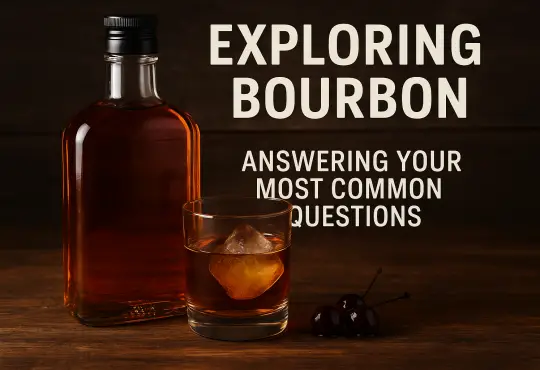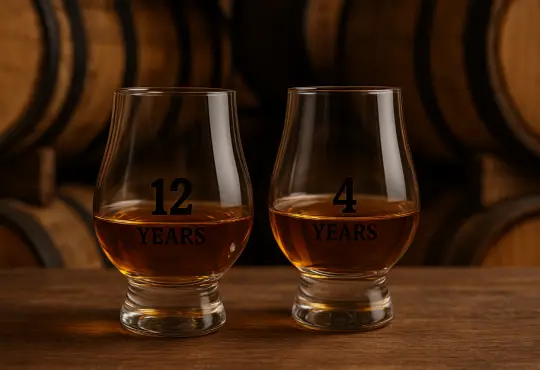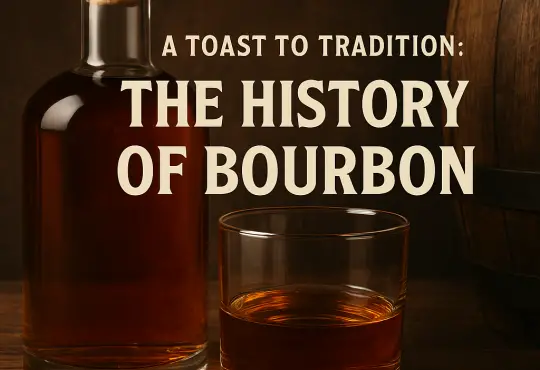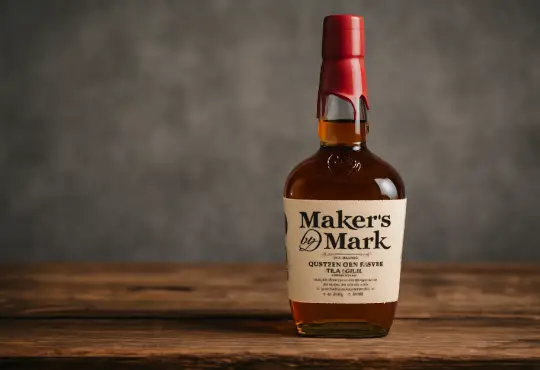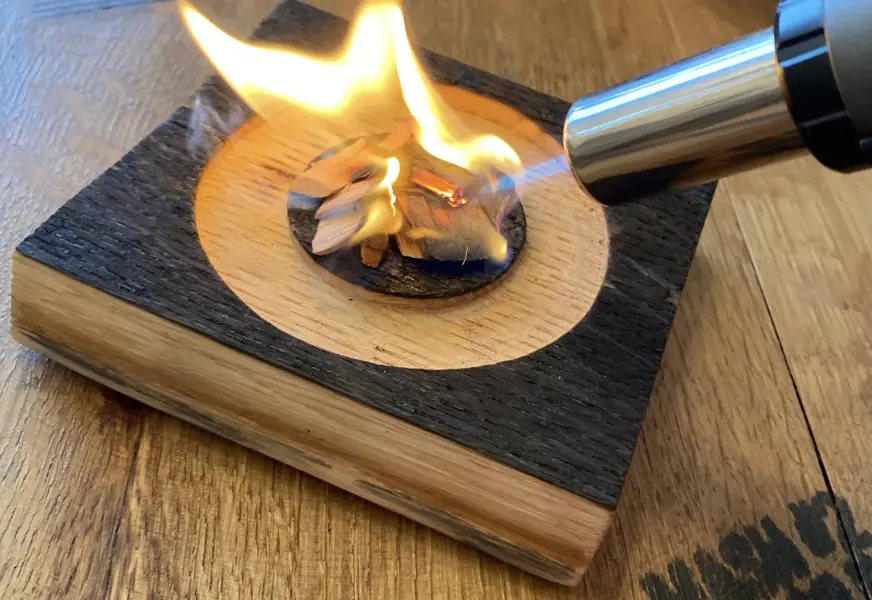
Savoring the Flames: The Art of Smoked Bourbon Whiskey
Welcome, adventurous whiskey enthusiasts, to the smoky realm of bourbon! Just when you thought your favorite amber elixir couldn’t get any better, along comes the captivating world of smoked bourbon whiskey. Picture this: the smoothness of bourbon dancing harmoniously with the sultry embrace of aromatic smoke, creating a flavor symphony that tantalizes your taste buds like never before. It’s like a captivating dance party where bourbon and smoke hit the dance floor and ignite a fiery passion in every sip. So, buckle up and prepare to embark on a smokin’ adventure as we dive into the captivating realm of smoked bourbon whiskey. Get ready for a journey that’ll leave you craving that seductive smokiness with every pour. Let’s explore the alchemy behind this unique fusion and discover why smoked bourbon whiskey is the newest star on the whiskey connoisseur’s stage. Let the smoky spectacle begin!
How is smoked bourbon whiskey made?
Smoked bourbon whiskey is a captivating fusion that combines the smooth richness of bourbon with the enchanting essence of smoke. The process of creating smoked bourbon whiskey involves infusing the spirit with smoky flavors during production. While traditional bourbon production methods are followed, the addition of smoke adds an extra layer of complexity and character to the final product. Here’s a breakdown of the general steps involved:
- Malted Barley and Grains: Like traditional bourbon, smoked bourbon whiskey begins with a mash bill that typically includes a mixture of corn, malted barley, and other grains such as rye or wheat. These grains form the foundation of the whiskey’s flavor profile.
- Mashing and Fermentation: The grains are mashed and combined with water to extract the sugars, creating a sweet, fermentable liquid known as the mash. Yeast is then added to the mash, initiating the fermentation process. This converts the sugars into alcohol, producing a low-alcohol liquid called distiller’s beer.
- Distillation: The distillation process follows, typically involving a double distillation in copper stills. The fermented liquid is heated, and the vapor is collected and condensed, resulting in a high-proof spirit known as new make spirit or white dog.
- Aging in Charred Oak Barrels: The next crucial step for smoked bourbon whiskey is aging. The new make spirit is transferred to charred oak barrels, where it will mature over time. These barrels contribute to the whiskey’s characteristic flavors by imparting notes of caramel, vanilla, and oak.
- Smoking Process: The smoking process occurs during aging and involves exposing the bourbon-filled barrels to smoke. Various methods can be employed, such as using charred wood chips, barrels previously used for smoking other spirits, or even placing the barrels in smokehouses. The smoke infuses the bourbon, lending it a distinct smoky aroma and flavor.
- Maturation and Blending: As the smoked bourbon whiskey ages in the smoky environment, it develops further complexities and harmonizes with the flavors from the charred oak barrels. Master blenders carefully monitor the aging process, ensuring that the whiskey reaches its desired flavor profile. After maturation, different barrels may be blended to achieve the desired balance and consistency.
- Bottling and Enjoyment: Once the desired flavors have been attained, the smoked bourbon whiskey is carefully filtered, proofed, and finally bottled. It is then ready to be shared and enjoyed by whiskey enthusiasts, who can revel in the unique combination of smooth bourbon and smoky allure.
Does smoking bourbon whiskey affect its flavor profile?
Yes, smoking bourbon whiskey does indeed have a significant impact on its flavor profile. The introduction of smoky elements adds a new dimension and complexity to the overall taste experience. Here are some ways in which smoking can influence the flavor profile of bourbon whiskey:
- Smoky Aroma: The first noticeable effect of smoking is the infusion of a distinct smoky aroma. The wood chips or smoky environment impart scents of campfire, charred wood, or roasted grains, enhancing the aromatic profile of the bourbon. This can add layers of depth and intrigue to the whiskey’s olfactory characteristics.
- Flavor Nuances: The interaction between the bourbon and the smoke introduces new flavor nuances to the spirit. Smoky notes, reminiscent of bonfires and roasted elements, intertwine with the existing flavors of caramel, vanilla, oak, and spices. The result is a fusion of sweet, rich bourbon with earthy, smoky undertones that can vary in intensity depending on the smoking process.
- Balance and Complexity: Smoking can create a well-rounded flavor profile by balancing the sweetness of bourbon with the savory and smoky elements. It introduces a counterpoint to the inherent richness of the spirit, adding complexity and intrigue. The marriage of smokiness with the bourbon’s natural characteristics can create a harmonious and memorable taste experience.
- Length of Finish: The finish, or aftertaste, of smoked bourbon whiskey can also be affected by the smoking process. The lingering smoky flavors can extend and evolve on the palate, providing a long and satisfying finish. This extended finish can contribute to the overall enjoyment and depth of the whiskey.
- Individual Preferences: The impact of smoking on bourbon whiskey’s flavor profile is subjective and can vary based on personal taste preferences. Some individuals may appreciate the added smokiness and find it enhances their enjoyment of the spirit, while others may prefer the traditional, non-smoked bourbon flavor profile. It’s important to consider individual preferences when exploring smoked bourbon whiskey.
It’s worth noting that the intensity of smoky flavors can vary depending on factors such as the duration of smoking, the type of wood used, and the specific smoking method employed. Different distilleries and producers may have their own techniques and approaches, leading to a wide range of smokiness levels in smoked bourbon whiskey.
What are some popular brands or distilleries known for producing smoked bourbon whiskey?
While smoked bourbon whiskey is a relatively niche category, there are a few notable brands and distilleries known for their offerings in this realm. Here are some popular names to explore:
- Balcones Brimstone: Balcones Distilling, based in Texas, produces Brimstone, a unique smoked corn whiskey that showcases an intense smoky profile. It is made using a proprietary smoking process, resulting in robust flavors and a distinctive character.
- High West Campfire: High West Distillery, located in Utah, crafted Campfire, a blended whiskey that combines bourbon, rye, and peated Scotch whisky. The addition of peated Scotch brings a smoky element to the blend, creating a complex and intriguing flavor profile.
- Kings County Peated Bourbon: Kings County Distillery, based in Brooklyn, New York, offers a Peated Bourbon that incorporates a smoky twist. It is made using malted barley that has been exposed to peat smoke, resulting in a bourbon with pronounced smoky notes.
- Corsair Triple Smoke: Corsair Artisan Distillery, with locations in Tennessee and Kentucky, produces Triple Smoke, a whiskey crafted from malted barley that is smoked with three different types of wood: cherry, beech, and peat. This unique combination of smoky flavors sets it apart.
- Laphroaig Select Cask: While not a bourbon whiskey, Laphroaig is a well-known distillery from Islay, Scotland, that produces heavily peated single malt Scotch whiskies. Their expressions, such as Laphroaig Select Cask, can exhibit rich smoky and peaty characteristics that might appeal to fans of smoky bourbon.
Can smoked bourbon whiskey be used in cooking or for creating unique recipes?
Absolutely! Smoked bourbon whiskey can be a fantastic ingredient to incorporate into cooking and can add a delightful smoky twist to a variety of recipes. Here are a few ways you can use smoked bourbon whiskey in your culinary adventures:
- Sauces and Marinades: Add a splash of smoked bourbon whiskey to your barbecue sauces, glazes, or marinades. The smoky flavors will infuse into the sauce, complementing grilled meats, ribs, or even roasted vegetables.
- Whiskey-infused Desserts: Experiment with incorporating smoked bourbon whiskey into desserts like chocolate truffles, caramel sauces, or bread puddings. The smokiness can provide a unique and indulgent flavor component that pairs well with rich, sweet treats.
- Smoky Cocktails: Use smoked bourbon whiskey as the base spirit for a range of creative cocktails. Whether it’s a smoked old-fashioned, a smoky Manhattan, or a unique concoction of your own, the smoky notes in the bourbon will add depth and complexity to your drink.
- Smoked Bourbon Glaze: Create a glaze for roasted meats by combining smoked bourbon whiskey with other ingredients like honey, brown sugar, spices, and a touch of acidity. Brush the glaze onto pork tenderloin, chicken wings, or glazed salmon for a deliciously smoky and flavorful result.
- Smoky Bourbon-infused Barbecue Beans: Add a splash of smoked bourbon whiskey to your barbecue beans for an extra layer of smoky goodness. The bourbon will enhance the flavor profile of the beans and provide a subtle kick.
- Smoky Bourbon Reduction: Simmer smoked bourbon whiskey with some herbs, spices, and a touch of sweetness to create a savory reduction sauce. Drizzle it over grilled steaks, pork chops, or roasted vegetables for a smoky and flavorful finishing touch.
Remember to use smoked bourbon whiskey sparingly and adjust quantities to taste, as the smoky flavors can be quite potent. Also, consider the alcohol content when cooking with whiskey, as some of it may not evaporate completely during the cooking process.
Can smoking bourbon whiskey be done at home, or is it primarily done by distilleries?
Smoking bourbon whiskey is primarily done by distilleries as part of the production process. The controlled environment, equipment, and expertise available at distilleries allow for consistent and professional results. However, if you’re feeling adventurous, you can experiment with infusing smoky flavors into bourbon at home using alternative methods. Here are a few options to consider:
- Smoked Wood Chips: One approach is to use charred wood chips, typically used for smoking foods, to impart smoky flavors to bourbon. Place a handful of wood chips (such as oak, hickory, or cherry) in a container and ignite them until they start to smolder. Place the smoldering chips in a covered container with the bourbon, ensuring the smoke is trapped inside. Let it sit for a period of time, periodically checking the aroma and taste until the desired smokiness is achieved. Keep in mind that this method requires caution and proper ventilation to prevent any accidents.
- Smoke Gun or Smoking Dome: Another option is to use a smoke gun or smoking dome, which are devices designed for infusing smoky flavors into food and beverages. These tools allow you to add controlled bursts of smoke to the bourbon. Follow the manufacturer’s instructions to safely and effectively infuse the desired amount of smoky aroma and flavor.
- Barrel-Aging with Smoky Elements: If you have access to small barrels or oak aging vessels, you can experiment with aging bourbon in them along with smoky elements. This can involve placing charred wood chips or previously smoked materials inside the barrel along with the bourbon. The bourbon will interact with the smoky elements as it ages, resulting in a smoky flavor profile. However, note that aging whiskey at home requires time, patience, and careful monitoring.
It’s important to remember that home smoking methods may yield different results compared to professional distillery techniques. The intensity and consistency of the smoky flavors may vary, and it may take some experimentation to achieve the desired outcome. Exercise caution and ensure proper ventilation when working with smoke or open flames.
While distilleries have perfected the art of smoking bourbon whiskey, exploring DIY methods at home can be a fun and creative way to experiment with flavors and discover your own unique smoky bourbon creations.
Conclusion
In conclusion, smoked bourbon whiskey is a captivating and flavor-packed fusion that adds an intriguing twist to the world of bourbon. The marriage of smooth, rich bourbon with the captivating essence of smoke creates a unique sensory experience that delights whiskey enthusiasts. Whether it’s the enticing smoky aroma, the nuanced flavor profiles, or the balance between sweetness and savory notes, smoked bourbon whiskey offers a delightful journey for the palate.
From the smoldering wood chips to the aging process in smoke-filled environments, distilleries have perfected the art of infusing bourbon with smoky elements. The result is a range of smoked bourbon whiskey expressions that showcase the creativity and craftsmanship of master blenders and distillers.
Furthermore, smoked bourbon whiskey opens up exciting possibilities in the culinary realm. Its smoky flavors can be incorporated into sauces, desserts, cocktails, and more, adding a unique twist to traditional recipes and allowing for creative experimentation in the kitchen.
While smoking bourbon whiskey is primarily done by distilleries, adventurous individuals can explore alternative methods at home to infuse smoky flavors into their bourbon. However, it’s essential to exercise caution and follow proper safety measures when experimenting with DIY smoking techniques.
Whether you’re a seasoned whiskey connoisseur or a curious enthusiast, smoked bourbon whiskey offers a fascinating and delicious journey into the world of spirits. Its distinctive character and complex flavor profiles are sure to leave a lasting impression.

